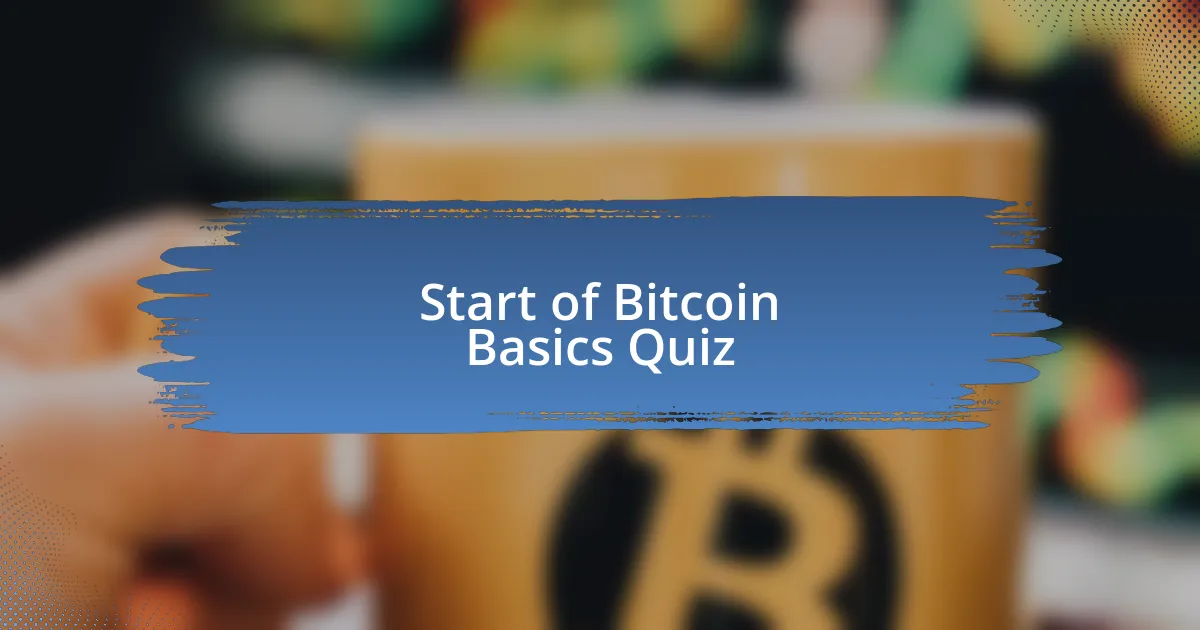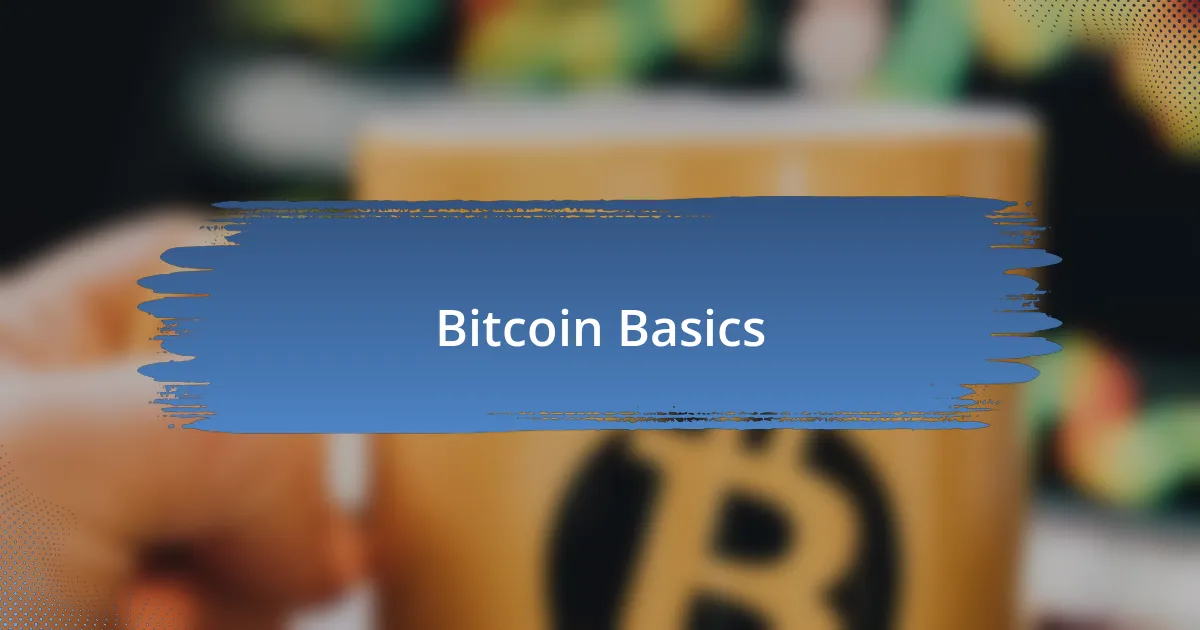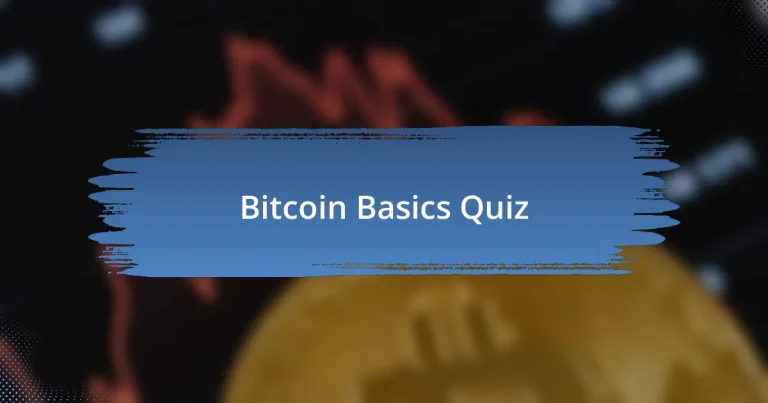
Start of Bitcoin Basics Quiz
1. Who is considered the creator of Bitcoin?
- Roger Ver
- Charlie Lee
- Satoshi Nakamoto
- Vitalik Buterin
2. What is the name of Bitcoin`s foundational document?
- `Satoshi`s Vision`
- `The Bitcoin Protocol`
- `Bitcoin: A Peer-to-Peer Electronic Cash System`
- `Digital Gold Manifesto`
3. When did the first block of Bitcoin, known as the genesis block, get mined?
- February 5, 2008
- January 3, 2009
- December 25, 2011
- March 10, 2010
4. What is the maximum supply limit of Bitcoin?
- 50 million
- 10 million
- 21 million
- 100 million
5. What are the computers that support the Bitcoin network called?
- Nodes
- Servers
- Terminals
- Clients
6. What term describes computers in the Bitcoin network that create new blocks?
- Operators
- Servers
- Nodes
- Miners
7. What is the name of the smallest unit of Bitcoin?
- Nanocap
- Satoshi
- Microcoin
- Bitunit
8. How long does it typically take to create a new Bitcoin block?
- Every 5 minutes
- Every 10 minutes
- Every 15 minutes
- Every 30 minutes
9. Who is eligible to join the Bitcoin network?
- Anyone with a computer and internet connection
- Authorized financial institutions
- Individuals living in the U.S.
- Only certified developers
10. The individual who initiates a Bitcoin transaction is referred to as?
- Sender
- Receiver
- Broker
- Miner
11. What is the main function of mining in the Bitcoin ecosystem?
- To validate transactions and add new blocks to the blockchain
- To create smart contracts automatically
- To enhance user privacy and anonymity
- To steal information from users
12. What is the term for the process of adding new transactions to the Bitcoin network?
- Trading
- Investing
- Mining
- Banking
13. How are Bitcoin transactions organized?
- In lines
- In clusters
- In chains
- In blocks
14. What is the smallest unit of Bitcoin called?
- Ledger
- Bitcoin
- Block
- Satoshi
15. What do we call the public, transparent record of all Bitcoin transactions?
- Blockchain
- Archive
- Database
- Ledger
16. How are Bitcoin transactions protected?
- By using traditional banking systems
- With physical currency exchanges
- Through email confirmations
- Through cryptographic signatures and hashing
17. What significance do private keys hold in Bitcoin transactions?
- To store passwords securely
- To generate Ethereum tokens
- To sign transactions and prove ownership
- To encrypt emails and messages
18. What role do public keys play in the Bitcoin system?
- To encrypt transaction data and secure wallets
- To receive transactions and verify ownership
- To create new Bitcoins and add blocks
- To sign transactions and prove ownership
19. What is the typical interval between the addition of new blocks?
- Every hour
- Every 5 minutes
- Every 10 minutes
- Every 15 minutes
20. What term is used for the activity of miners solving complex problems to add transactions?
- Packaging
- Compiling
- Assembling
- Mining
21. What rewards does a miner receive for successfully adding a block?
- Dollars and subscription fees
- Gift cards and loyalty points
- Gold coins and service charges
- Newly minted Bitcoins and transaction fees
22. How does Bitcoin adjust the complexity of its mining process?
- Once a month, based on user demand for transactions
- Every 200 blocks, depending on the total network hash rate
- After every 2016 blocks, based on the time it took to solve the previous 2016 blocks
- Every 100 blocks, adjusted by median transaction fees
23. What unique piece of information is included in each block?
- Timestamp
- Signature
- Hash
- Nonce
24. What is the term for an additional counter used during the hashing process?
- Redundant key
- Overflow counter
- Auxiliary hash
- Extra nonce
25. What is the main purpose of using blockchain technology in Bitcoin?
- To create a permanent, tamper-proof record of all transactions
- To collect personal information of users
- To increase the speed of transaction processing
- To generate new Bitcoins for users
26. How does a Bitcoin wallet determine what funds are available to spend?
- By summing all past transaction amounts
- By checking the blockchain for unspent transaction outputs
- By calculating total balances from wallet history
- By contacting a central server for balances
27. What term refers to the network of nodes that collectively verify Bitcoin transactions?
- Digital ledger
- Satoshi system
- Blockchain
- Peer-to-peer network
28. How is transaction information shared across the Bitcoin network?
- Through a peer-to-peer network
- By a central server
- Via email communication
- Through postal mail
29. What do we call the digital ledger that lists every Bitcoin transaction ever made?
- Blockchain
- Ledger
- Database
- Archive
30. What process leads to the creation of new Bitcoins?
- Mining
- Printing
- Forging
- Minting

Congratulations! You’ve Completed the Bitcoin Basics Quiz!
Well done on finishing the Bitcoin Basics quiz! This journey has not only tested your knowledge but also introduced you to the fascinating world of cryptocurrencies. You’ve learned about the fundamental concepts of Bitcoin, including its origins, how it works, and its role in the current financial landscape. These insights can help you understand why Bitcoin has garnered so much attention and how it may impact future transactions.
Your participation in this quiz likely sparked curiosity about digital currencies. You may now have a better grasp of essential terms like blockchain, mining, and wallets. This foundational knowledge is crucial as the world shifts towards digital assets. Recognizing these basics empowers you to engage more confidently in discussions about Bitcoin and cryptocurrencies in general.
If you’re eager to dive deeper into this topic, we invite you to explore the next section on this page dedicated to Bitcoin Basics. It offers further information that can enhance your understanding and keep you informed about the latest trends. Stay curious and continue your educational journey in the realm of Bitcoin!

Bitcoin Basics
Understanding Bitcoin
Bitcoin is a decentralized digital currency created in 2009 by an anonymous person or group known as Satoshi Nakamoto. It operates without a central authority, enabling peer-to-peer transactions directly over the internet. This technology relies on blockchain, a public ledger that records all transactions across a network of computers. The decentralized nature of Bitcoin enhances security and reduces the risk of fraud.
How Bitcoin Transactions Work
Bitcoin transactions involve the transfer of currency between wallets using cryptographic keys. To initiate a transaction, a user signs it with a private key. The signed transaction is broadcast to the network, where miners verify its validity. Once confirmed, the transaction is added to the blockchain, making it immutable and publicly accessible. This process ensures transparency and accountability.
The Mining Process
Bitcoin mining is the process by which transactions are verified and added to the blockchain. Miners use powerful computers to solve complex mathematical problems. This process is known as proof-of-work. Successful miners receive newly created bitcoins as well as transaction fees as a reward. Mining secures the network and ensures the integrity of the transaction history.
Bitcoin Wallets
A Bitcoin wallet is a digital tool that allows users to store and manage their bitcoins. Wallets can be software-based, hardware-based, or even paper-based. Each wallet has a unique address, similar to an account number, allowing users to send and receive bitcoins. Proper security measures, such as backing up recovery phrases, are essential to protect against loss or theft.
Bitcoin’s Role in the Economy
Bitcoin has emerged as a store of value and a medium of exchange. Many view it as “digital gold” due to its limited supply of 21 million coins. Bitcoin’s volatile price has attracted investors seeking high returns. Additionally, businesses increasingly accept Bitcoin as payment, expanding its use in the global economy. This growing acceptance signals its potential to influence financial systems.
What is Bitcoin?
Bitcoin is a decentralized digital currency invented in 2008 by an unknown person or group of people using the pseudonym Satoshi Nakamoto. It allows peer-to-peer transactions over the internet without the need for intermediaries. Bitcoin transactions are recorded on a public ledger known as the blockchain, ensuring transparency and security.
How does Bitcoin work?
Bitcoin works by utilizing blockchain technology to maintain a secure and transparent record of all transactions. Each transaction is verified by network nodes through cryptography and added to the blockchain. Miners validate these transactions and, in return, receive newly created bitcoins as a reward. This process secures the network and regulates the creation of new bitcoins.
Where can you buy Bitcoin?
You can buy Bitcoin on various cryptocurrency exchanges, including Coinbase, Binance, and Kraken. These platforms allow users to trade traditional currencies for Bitcoin. Additionally, you can purchase Bitcoin through Bitcoin ATMs, peer-to-peer platforms, or from individuals directly.
When was Bitcoin created?
Bitcoin was created in January 2009 when the first block, known as the genesis block, was mined by Satoshi Nakamoto. The Bitcoin whitepaper was released in October 2008, detailing the concept of a digital currency based on blockchain technology.
Who controls Bitcoin?
No single entity controls Bitcoin. It operates in a decentralized manner through a network of computers (nodes) around the world. Any changes to the Bitcoin protocol must be agreed upon by the majority of miners and users, ensuring that control remains distributed among its participants.


